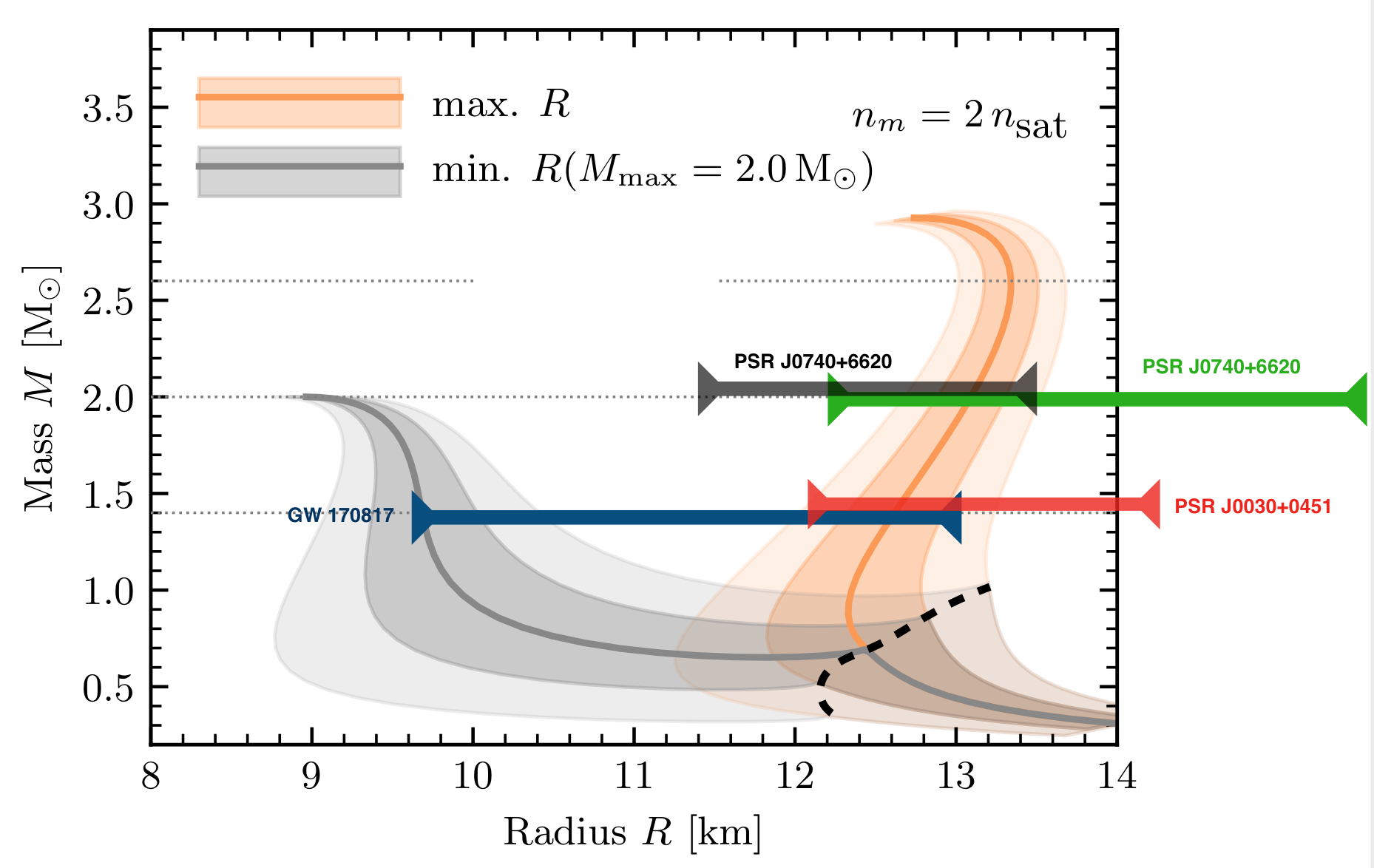NICER / ISS Science Nugget
for April 22, 2021
Determining the Stiffness of Neutron Stars
One of the principal outstanding problems in modern physics is the state of matter at densities exceeding that of an atomic nucleus. A plethora of theoretical predictions in this regime exists; they range from normal nucleonic matter to exotic states that cannot be reproduced in terrestrial laboratories. Matter in this extreme regime is known to exist in a stable form only in the cores of neutron stars, which makes them uniquely valuable for our understanding of nuclear physics, as they serve as natural laboratories for studying the strong force (which binds nuclei together) and the state of ultra-dense matter. Constraining the properties of dense matter using observations of neutron stars is one of the key science goals of the NICER mission.
Because the relationship between a neutron star's mass and radius is strongly sensitive to the state of matter in its core, observations of the exteriors of neutron stars that yield mass and radius measurements can constrain the properties of ultra-dense matter. The NICER team is focusing on rapidly spinning neutron stars (millisecond pulsars) that radiate X-rays from one or more high-temperature (millions of degrees) regions on their surfaces. In 2019, the first set of NICER neutron star mass-radius and dense matter constraints was published for the nearby millisecond pulsar PSR J0030+0451.
This week, a new measurement was announced by the NICER team at the April Meeting of the American Physical Society, for the millisecond pulsar PSR J0740+6620. This neutron star is exceptional in that it has the highest mass known, over twice the mass of our Sun, as measured from ground-based radio pulse timing observations. Taking this mass measurement into account and using extensive observations of PSR J0740 with NICER, augmented by X-ray imaging observations using ESA's XMM-Newton telescope, the NICER team has obtained the best-yet constraints on the properties of ultra-dense matter. NICER's inferred radius of PSR J0740 is very similar to that of PSR J0030, even though they differ in mass by > 50%. This result rules out (see figure) many theoretical models that predict very "squishy" stars; NICER's result suggests, instead, that neutron stars are much stiffer. The papers describing these findings and their implications are now undergoing peer review prior to publication.

Figure: The unknown nature of dense matter in the cores of neutron stars can be revealed through the relationship between the masses (in units of Solar mass) and radii of a collection of stars, as traced out in a mass-radius diagram. Here, the orange curves and bands represent a family of theories (so-called "equations of state," or EOS) that call for "stiff" stars -- in which the core is able to better withstand the pressure of the star's outer layers, resulting in a larger star -- while the gray traces represent "soft" EOS theories, resulting in smaller stars. (Intermediate EOS possibilities are not shown, nor are those unable to accommodate 2 Msun stars.) The heavy dashed curve in the lower-right corner represents the limit achieved in Earth-based laboratory experiments. The radius ranges derived from NICER measurements are shown by Horizontal bars. A complementary result from the famous double-neutron-star merger event detected by the Laser Interferometer Gravitational-wave Observatory (LIGO) is shown by the blue horizontal bar, while the red bar shows the NICER result for PSR J0030, published in December 2019. In green and brown are the NICER results announced this week. The NICER results clearly favor stiff EOS models. Figure credit: S. Reddy, U. of Washington.)
<< Previous
Main Index
Next >>